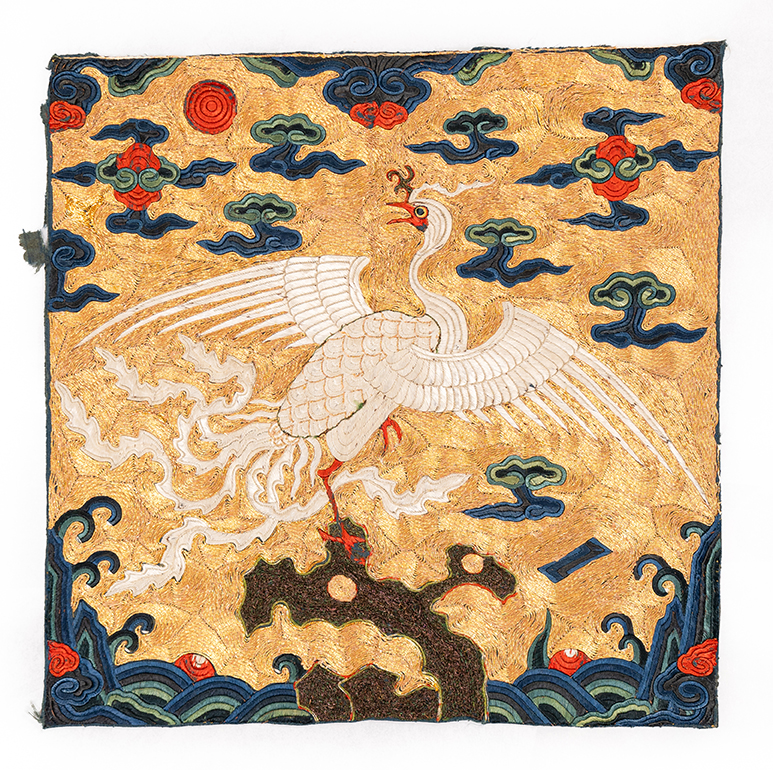Silk from the Tang
Through the Qing Dynasties
From the Tang dynasty on Chinese rulers invested heavily in the production of silk. New embroidery stitches and improved methods of weaving allowed for the blossoming of silk design and production. And as silk became more available, emperors tried to restrict its use in clothing, decreeing who could wear what, where, when, and how. These laws reveal that the latest court fashions were now being copied by the upper middle-classes.
During this period there were ongoing commercial, cultural and artistic exchanges between the Han Chinese and neighbouring kingdoms. From nomadic groups, for instance, Han Chinese adopted the complex art of gold weaving, used to create clothes of gold, so desired by all European rulers in the Middle Ages. Just as important, slit tapestry or kesi, developed by the Sogdians or Uyghurs of Central Asia, was also transmitted to Chinese artisans in the region.
Fifth Rank Civil Badge (Silver Pheasant)
China, Kangxi Period (1680-1700)
Embroidered polychrome silk, gold threads, peacock, feather filaments
H. 32. 2 cm x L. 30.5 cm
Chris Hall Collection
Cheating Handkerchief (for civil exams)
China, 19th century
Paint on silk
42 cm square
Chris Hall Collection
Portrait of Prince's Consort
China, late Qing dynasty, 19th century
Coloured ink on silk
H. 236.3 cm x L. 93 cm
Chris Hall Collection




